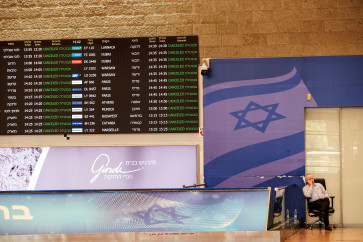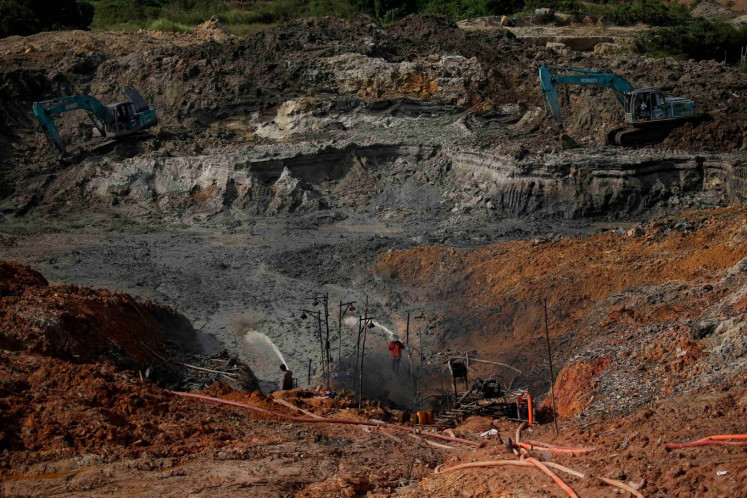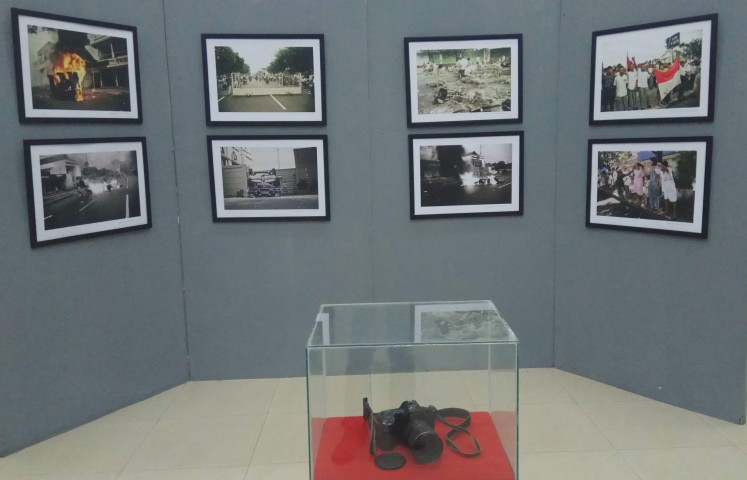Popular Reads
Top Results
Can't find what you're looking for?
View all search resultsPopular Reads
Top Results
Can't find what you're looking for?
View all search resultsJeremy Millar: Observing & Researching Art
Video art: Jeremy Millar creates a video installation as part of his participation at the 2015 Jakarta Biennale, which runs until Jan
Change text size
Gift Premium Articles
to Anyone
 Video art: Jeremy Millar creates a video installation as part of his participation at the 2015 Jakarta Biennale, which runs until Jan. 17.(Courtesy of British Council) (Courtesy of British Council)
Video art: Jeremy Millar creates a video installation as part of his participation at the 2015 Jakarta Biennale, which runs until Jan. 17.(Courtesy of British Council) (Courtesy of British Council)
V
span class="caption">Video art: Jeremy Millar creates a video installation as part of his participation at the 2015 Jakarta Biennale, which runs until Jan. 17.(Courtesy of British Council)
Many artists believe that a great imagination is one of the most important things that an artist can have in order to produce great work.
Renowned British artist Jeremy Millar recently told a group of enthusiastic young artists at the Jakarta Arts Institute (IKJ) in Cikini, Central Jakarta that based on personal experience, having a good imagination was not always necessary for an artist to create great work.
'I just like to observe things around me [...] Most of the time, what is happening around you is already interesting enough to give you ideas,' Millar said.
Millar also added that his observations would then lead him to do intensive research for his projects and that was how he basically produced his work as an artist.
Born in 1970, Millar, who lives in London, entered the art scene as a curator after he graduated with a photography degree from Nottingham Polytechnic.
'A curator does a lot of different things depending on the circumstances. If they work in a museum, they watch after the collection so that they can make sure that it is safe and choose what to display with it,' Millar said, explaining his job as an art curator.
'If they work in a different sort of space, then they might be conceiving an exhibition, deciding which artists to exhibit or to commission or how to produce new works as well. It used to be a very specific thing, but now it is becoming a bigger and bigger task,' he added.
The first job that Millar landed as a curator was for the Institute of Cultural Anxiety ' Works from the Collection exhibition at the ICA in London back in 1994.
He later curated art for Speed, Whitechapel Art Gallery, and The Photographers' Gallery in 1998, for the MediaCity exhibition in Seoul, South Korea, in 2000, and in 2010 he conceived Every Day is a Good Day for Hayward Touring, the largest exhibition to date of the visual art of John Cage.
Nowadays, however, Millar spends his time working as an artist.
As an artist, Millar's recent solo exhibitions include M/W at the Muzeum Stzuki in Lodz; XDO XOL at the Whitstable Biennale in London; The Oblate in Southampton City Art Gallery; Resemblances, Sympathies and Other Acts, CCA in Glasgow.
In Jakarta, Millar added to his extensive portfolio another exhibition as he participated in the 2015 Jakarta Biennale.

Held at Gudang Sarinah from Nov. 15 to Jan. 17 next year in Jakarta, this year's Jakarta Biennale presents three themes: water, history and gender. The three are the connecting threads among the works and art projects from 42 Indonesian and 28 international artists, including Millar's, selected by the 2015 Jakarta Biennale curators. In total, there are 70 artists, both individuals and groups.
'Well I have made a video installation and it relates to a historical figure from the past,' Millar explained about his exhibition at the Jakarta Biennale.
'A lot of my work relates to history and particular people and this is related to a French poet called Arthur Rimbaud who was very, very famous in Europe, but not here. He was very famous because he wrote his poetry when he was very young, when he was about 15 until he was about 19.'
Millar's work on Rimbaud at the Jakarta Biennale comes in the form of a documentary film entitled Abdo Rindo.
Like in Millar's previous work, he did intensive research and used a direct approach in creating the film on Rimbaud. He personally visited all corners of the towns and cities that Rimbaud lived in throughout his life. The towns and cities include London, Paris, Jakarta and Semarang.
One of the reasons Millar chose Rimbaud as an object for his exhibition in Jakarta was because of the great poet's past connection with Indonesia.
'When he was 21 he came to Java, he joined the Dutch colonial army and no one really knows why because it was so different from his politics and he ended up in Salatiga [Central Java] for two weeks and then deserted and fled back to France. No one quite knows how he got back,' Millar said.
'So, he had an incredibly fascinating life. He died when he was very young, when he was about 37 and he did more in his life than most people would do in 10 life times. He was an extraordinary figure, but this little story when he was here, people really do not know anything about it and I was interested in that story,' he said.
Millar said another was the notion that Rimbaud, despite being a figure from the past, had a progressive spirit that was in line the Jakarta Biennale's main themes.
'One of the things that Rembaud said was that we should absolutely be modern,' Millar said.
Rembaud, he said, was really obsessed with the idea of being modern and creating a new world, but he was also very cynical and so he wasn't a utopian.
'His philosophy was that we should create a new world and it does sound very utopian, but he wasn't a utopian at all. He was also very cynical and in some ways a dangerous person really. So he really worked with the situation that he was presented with. He dealt with the real world, with money and trade. So that's one of the reasons why he is very interesting to me in this context,' he said.
'Seeing a lot of work in the exhibition now, there is a lot of stuff about politics and the environment and things like that and feminism as well. For his time, he was here in 1876, so it was quite a long time ago, he was very radical in his ideas about feminism and things like that.'









